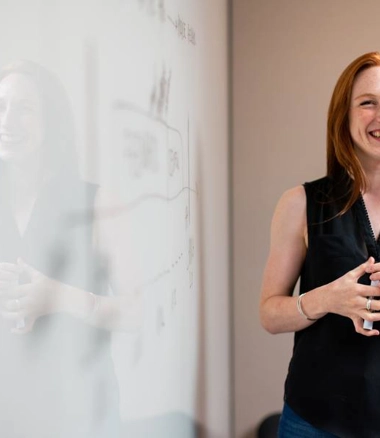
The COVID-19 pandemic has disrupted many industries worldwide, and the building services industry is no exception.
The strain on businesses is still heavily felt 2 years since the pandemic started. Some have permanently closed their doors, while others are still trying to mitigate their losses. As for the Building Services Industry in Australia, there are numerous and varied challenges that they continue to battle with.
In this blog article, we’ll discuss the top 5 challenges facing the Building Services Industry in 2022. But the good news is there are opportunities these challenges pose for engineers to improve the future of Building Design in Australia.
1. The Shortage of Skilled Workers
One of Australia's most significant challenges facing the Building Services Industry is the shortage of skilled workers. This shortage is expected to reach critical levels by 2022, as the engineering job vacancy rate increased by 176%.
This shortfall is driven by several factors, including an aging workforce, retirements, and declining interest from young people in pursuing careers in the Building Services Industry. The result is that businesses are struggling to find enough qualified workers to fill vacant positions. This shortage of skilled workers is expected to have numerous impacts on the construction industry, including:
-
Delays in the construction process due to a lack of available workers.
-
Increased costs associated with hiring workers from overseas.
-
Difficulty in attracting and retaining qualified employees.
Opportunity: The shortage of skilled workers is a significant challenge, but it also presents some opportunities for the industry to improve the future of building design in Australia.
One way the industry can address this shortfall is by investing in training and development programs to attract young people to pursue careers in Building Services. The industry can also work with educators to ensure that the curriculum at schools and universities reflects the latest trends and technologies in the construction industry.
The industry can also attract workers from overseas by creating incentives such as visa programs that make it easier for workers to move to Australia. The industry can also work with educational institutions in other countries to develop partnerships that allow students to study building services in Australia.
Additionally, construction companies can invest in technologies to make timely payments to subcontractors to mitigate labour concerns. Labor lives at the subcontractor level, and subcontractors can be more selective to work during a labour shortage. So, to build trust and foster a good relationship, make timely payments through automation.
2. The Rising Cost of Construction Materials
Another challenge facing the industry is the rising cost of construction materials. The price of steel, for example, skyrocketed by over 42% by March 2022. Some factors that caused this increase include global trade tensions, pandemic-related supply chain disruptions, and increased demand from China.
As of June 2022, the Australia Bureau of Statistics recorded an increase of about 40 per cent in prices for reinforced steel, structural timber, and steel beams.
The rising cost of construction materials severely impacts the Industry in different ways, such as:
-
Delays in projects as businesses struggle to source materials at the right price
-
Increased costs associated with purchasing construction materials for construction projects
-
Difficulty in designing reliable buildings due to lack of materials
Opportunity: By investing in research and development to find alternative materials that are cheaper and more readily available, we’ll see the industry can easily overcome this. Businesses can also work with suppliers to create long-term contracts that guarantee a certain price for construction materials.
Another way to mitigate the impact of rising construction material prices is by developing prefabrication and modular construction methods. These methods allow businesses to complete the construction process by manufacturing components off-site and assembling them on-site, which can help reduce project costs.
As for engineers, they can develop new ways to use construction materials more efficiently. For example, this could involve designing a building that uses less steel or timber or finding ways to reuse and recycle construction materials.
3. Changing Consumer Demands
As society evolves, so too do the demands of consumers. This is particularly true when it comes to buildings, as people are increasingly looking for structures that are sustainable, energy-efficient, and adaptable to changing needs.
The challenge for the construction industry is to keep up with these changing demands and incorporate them into the design of new buildings. Failure to do so could result in businesses losing out on customers and revenue. Some of the key consumer trends that the industry needs to be aware of include:
-
The increasing popularity of sustainable buildings
-
The rise of the sharing economy
-
The growth of the “gig” economy
-
The rise of digital nomads
-
The growth of the millennial generation
Opportunity: As you can see, the industry needs to prepare for a range of different challenges in the coming years. By investing in research and development, training and education, and attracting workers from overseas, the industry can position itself to take advantage of new opportunities and meet the changing consumer demands.
4. The Impact of Climate Change
Climate change is another significant challenge facing the industry. The impact of climate change is expected to cause more extreme weather events and natural disasters, such as floods and bushfires, which can damage buildings and infrastructure.
Climate change is also expected to increase average temperatures, which will impact the thermal comfort of commercial buildings and the efficiency of mechanical systems.
And today, the impacts of climate change are already being felt by the industry, with an increase in the number of heat-related deaths reported in Australia in recent years. Additionally, the Insurance Council of Australia estimated that the cost of extreme weather will jump to over $2,500 a year by 2050 from the average annual household cost of $888 for the past 10 years.
Opportunity: One way the industry can address this challenge is to find ways to make buildings more resilient to extreme weather events. The industry can work with the government to incentivise builders and developers to construct climate-friendly or net-zero buildings. The sector can also explore ways to use and maximise renewable energy sources to power buildings.
5. Cybersecurity Risks
According to the Australian Cyber Security Centre, in the 2020-21 financial period, over 67,500 cybercrimes were reported—with losses of more than $33 billion.
As buildings increasingly rely on modern technology, they are also becoming more vulnerable to cybersecurity risks. These risks can come from various sources, including malicious hackers, viruses, and software glitches. These risks can result in data breaches, system outages, and reputational damage if not properly managed.
For example, ransomware attacks can potentially shut down access to critical data, which may lead to construction delays. This won't only negatively affect your business but also the contractors, subcontractors, and other key players involved.
So, the construction industry needs to take steps to mitigate the risk of cybersecurity attacks. This includes investing in cybersecurity training for employees and implementing strict security protocols. The industry should also work with suppliers to ensure that the products and systems they use are secure.
Opportunity: Engineers and other technical experts in the industry are well-positioned to take advantage of opportunities in cybersecurity. Acquiring the necessary skills and knowledge can help protect buildings from attacks and safeguard the industry's reputation.
By placing preventive measures against cyber attacks, companies and engineers can improve the building design in Australia through more secure buildings and less vulnerability to attacks. This includes investing in the right digital technologies that are reliable and secure.
Take Advantage of Challenges to Be Ahead
The Building Services Industry, and the construction ecosystem in general, has always been a complicated world, and the pandemic took that to another level. It's had far-reaching impacts on the business of building infrastructure.
There are definite challenges, such as the shortage of skilled workers. But, there are also great opportunities to improve the future of Building Design in Australia. One way to continue climbing the ladder of success is by having the right and dependable engineers in your team.
Despite the shortage, some businesses specialise in connecting the perfect engineers to the right companies. One of them is Connexus Recruitment.
Connexus Recruitment helps engineers from all stages of their careers to work with the best companies in Australia. Contact us today to see what we can do for you.





